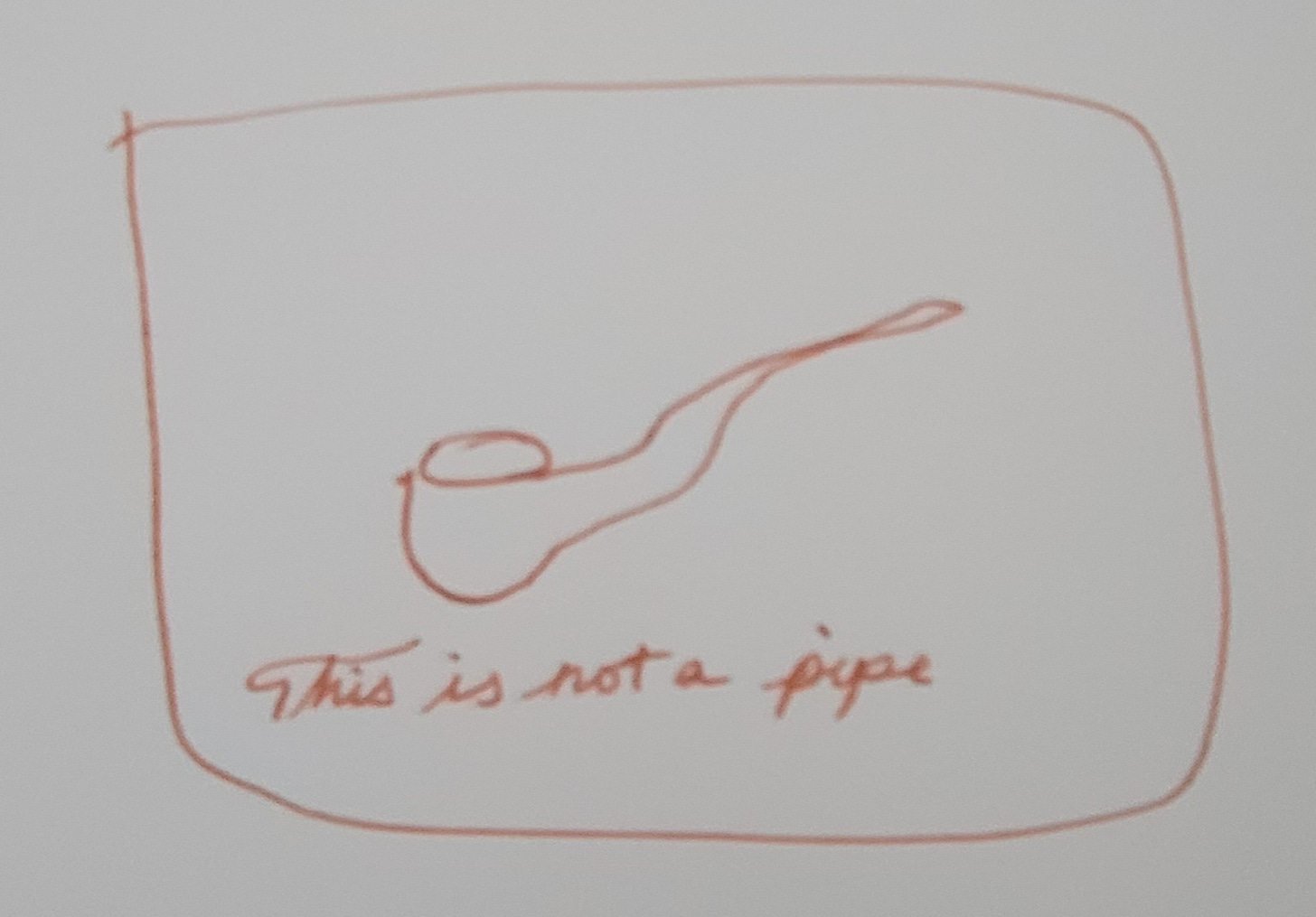Hi friends,
Isn’t it funny how your first teacher can totally frame your relationship with a subject?
Outside of a high school world religions class that discussed it for about a week, my first brush with Buddhism was an undergraduate philosophy class. I hated it. I felt like my sweaty professor (he biked to campus) only ever responded to questions with extremely annoying deflections.
He himself said he both was and was not Buddhist, because he did and did not exist. (?!?) He looked so smug. “WHAT IS WRONG WITH YOU,” I thought. He brought in a monk. I asked about female monks. Just as I suspected. More things to hate.
Still, I'm glad I sat through all that pedagogical bullshittery before encountering a mindfulness-based stress reduction (MBSR) teacher. I left that classroom with not really the faintest sense of what was going on, but a respect for the depth of thought. I know a “wellness” space could not and does not usually offer such thorough(ly frustrating) context.
This essay covers some of what gets lost when mindfulness becomes purely individual practice, and a bit of what we could gain by seeing it otherwise.
Caring for myself is not self-indulgence, it is self-preservation, and that is an act of political warfare. — Audre Lorde
Self-care cannot be an “act of political warfare” if the only battle you’re waging is against your own frown lines with $110 moisturizer. — Kathleen Newman-Bremang
On Adaptations and Derivatives
If your primary teacher is hanging out in the "just breathe" realm…
I feel strong ambivalence toward this kind of mindfulness.
On one hand, “becoming aware” is a legit route into your own body, a kind of self-preservation especially for oppressed populations, as Audre Lorde writes. For people who feel distanced from their own experience, the work to unlearn obstacles to feeling is challenging, foundational, and often ongoing.
On the other, to call whatever happens in franchise gyms “mindfulness” feels reductive.
Today I’ll conclude the sentence above with “…keep going, if it’s helping you ground,” and talk about where you might go next.
This story won’t begin in a Massachusetts medical center, or in India, but in occupied Burma.
Diana Winston, head teacher at Mindful at the UCLA neuroscience institute, trainer of 500+ mindfulness teachers, and former Buddhist nun shreds several myths, including the one that mindfulness has “scientifically” proven benefits.1 She also states that the biggest change in dharma wasn’t MBSR, but something that took off in Burma, on November 28, 1885.
British colonization devastated the Burmese monastic system by cutting government funding. In response, Ledi Sayadaw made an existential financial decision to preserve the teachings: he’d translate the old texts from something elite and secretive to something “run of the mill” normies/non-monastics could learn and implement.
This would spark an explosion of lay practitioners across Southeast Asia in the early 20th century, later called the Vipassana movement. A handful of decades later, folks like Jon Kabat-Zinn would go, learn, and return to the US, where capitalism is the primary culture, with “Insight” teachings in tow.
Practice moved from Burmese monasteries to the streets to therapy couches and corporate wellness spaces in about a century. Great…right?

MBSR and its Critics
Jon Kabat-Zinn popularized stress-reduction for stressed individuals seeking individual solutions.
Kabat-Zinn’s MBSR has blown up in the stressed West, the land of people who think they can “pull themselves up by their bootstraps.” It can’t be denied that practicing embodiment as stress-reduction has helped millions of people. Christiane Wolf quotes a war veteran calling MBSR “candy ass shit” that nonetheless has helped him more than medication.
And so this leads to a core disagreement about how we’re defining and relating to mindfulness. Is it a path, a method, or a tool and means?
Many dharma lovers are, let’s say, irked by MBSR and its lack of…well, pretty much all context and substance. Small things like ETHICS are omitted. They/we complain about “McMindfulness,” the rendering of spiritual practice as something individual, superficial, and commercial.
Per Thich Nhat Hanh’s Plum Village site, if your teacher isn’t teaching the following qualities, they are teaching “wrong mindfulness.”
Mindfulness filled with love
Mindfulness is never an individual practice
Mindfulness includes and engages suffering and difficulty
Mindfulness is lived, not a collection of sitting cushions and retreats
As such, mindfulness leads to real change in ourselves and our communities
If that sounds hard to do with the “empty mind” your teacher might invite, that’s because A) it is impossible to go full smooth brain, B) yeah. It’s hard. That’s why it’s called “practice.”
None of this was supposed to be easy. Add in things like different histories of migration, racialization, war, and politics, and things get real hectic real fast.
Oh, “politics” did you say? Is mindfulness political?
Mindfulness has always been political
Buddhism began as a response to class warfare.
When Prince Siddhartha Gautama left the palace, it was because he realized his privilege was severed from the pains of the world, specifically aging, illness, and death. The fourth “sight” was that of a renunciate, and this kind of modeling is what encouraged him to venture forth.
Whereas he was locked away in a palace, some of us feel locked out of our bodies. He was born with privilege to give up. Some of us need to be reminded of something La Sarmiento once said: “You need to be somebody before you can be nobody.”
I often write about “complex identities” which, for me, refers to folks at the intersections of intersections, the kind that go into affinity spaces and are still the odd one out. I know you exist. We have lurked together. And yes, you and your felt experience matters.
Not-self doesn't mean you don't matter. It means your liberation and everyone else's are bound up together. Sangha (spiritual community) isn’t just your meditation circle, it’s the recognition we’re all part of something much larger already. And if I sincerely think every life is worthy of love and care, and I am alive, then necessarily I am, too. Same as every other living thing.
And for many, that’s a radically charged political view.
So that’s why—in this moment—I’m saying: getting into your own body is foundational, ongoing work, and this is not the day I’m going to shame starting where you are, whether it’s with InsightTimer or on a coastal retreat that costs thousands of dollars. Ask me again tomorrow.
Here’s the thing: the suffering all around the Buddha motivated him to act, and that effort leads to the last thing I want to address.
A Practice of Equanimity
Literally since the beginning, people have tried to make equanimity and acceptance the same thing.
Depoliticized mindfulness easily slips into a form of spiritual bypassing—using meditation to avoid rather than engage the conditions that create suffering.
What’s that line? “The only thing necessary for evil to triumph is for good people to make passive resignation a ‘wellness’ practice”?
Can you even imagine how “not equanimous” a prince would need to be to abandon everyone and everything at the palace to go try eating a single grain of rice a day for the liberation of all beings? That is some emo shit.
As a perfection (virtue), equanimity basically re-starts the list of ten because it’s so challenging to balance awareness and not flipping out all the time.
As a heart practice, equanimity balances compassion—actively staying with the suffering—and wisdom. Each of the heart practices has “near” enemies, things that can masquerade as a heart practice. The near enemies of equanimity?
Ignorance, indifference, apathy.
A confession: whenever someone equates equanimity or mindfulness with “acceptance,” it’s hard for me to resist feeling like they just utterly failed a litmus test. I know this is unreasonable. Equanimity can totally look like acceptance and maybe this is all semantics because the point isn’t about language, but lived practice.
I’ve got more equanimity practice of my own to do.
So don’t believe me. Try it for yourself.
If we can understand mindfulness as collective practice, we might reclaim abilities to transform much more than a mood.
Takeaway Practice
“Into your body and the wider world.”
The tagline for the newsletter has fluctuated, and is now indefinitely resting in a stable somewhere, but has always been some variation on “embodied and engaged.”
Embodied, to me, means befriending and tuning in to one’s own personal experience. Engaged means doing something with that with the intention to alleviate suffering.
Inversely, it’s like I said above: if I believe something about everyone else, it must also be true for me, and I should act accordingly.
How are you balancing embodiment and engagement? Big or small.
If you liked this, consider checking out:
My “emotional belonging” piece has become a sleeper hit of sorts, but I didn’t explain the term. If you liked that piece, you might be interested in this follow-up from my other newsletter,
, on climate emotions.🧬 Creative Coalition: Exquisite Biome — August 24
An interactive mindfulness workshop for folks seeking creative ways to process overwhelm and reconnect with wonder.
So much of our education and work systems depend on binaries: right/wrong, good/bad, 0/1.
Creativity is a muscle. This space provides grounded structure for you to exercise your imagination. As a participatory coalition, our goal is to meditate in action, to give each other permission to try, and to spend time cultivating collective curiosity.
Award-winning designer Caro Asercion's Exquisite Biome will guide us through imagining creatures and building scenes of them in their habitats, their kinship systems, how they occupy land. We'll build empathy and narratives around non-human creatures through collaborative storytelling.
Why not just work with real animals? Because not all of us are biologists. (Cough.) By making this a work of fiction, more of us can more fully imagine all the needs of these creatures, beyond our human limits.
August 24, 3-5:30 PM PT
Limit 10
Base price: $150
There are three full scholarships. Email or DM for more info.
Paid subscribers get 50% off using the code in the chat.
🧬 Sign up here! And bring a standard deck of playing cards if you can!
Bio
Logan Juliano, PhD (they/them) is a queer, transracial adoptee with a PhD in Performance Studies. They do all the Light Hive things and act as co-editor of Notes from the Inflection Point, where they write to share reflections and practices amid ecological and social uncertainty. Their adoptive Dad has been in the hospital this past week for cancer treatment and testing. It’s been a time.
It’s really hard to standardize replicable studies on subjective experience like “intention” and “meta-cognition.” The general point is: embodiment is key, the mindfulness veneer leads to spiritual bypassing. Why do we need to borrow spiritual language to just breathe?






I think we ascribe meaning to "acceptance" that is beyond the word. To accept means to receive something willingly or to agree to take something that is offered. To accept reality as it is, does not necessarily mean approval or agreement. To me, it's more like meeting it.
Love this post! Thank you for including Plum Village's list on what mindfulness is not, and including the British colonization of Burma. There's a fascinating podcast on this topic on The Emerald ("Why Mindfulness Is Not Enough") which was the first time I heard of the colonial history of mindfulness practices. It was so good and eye-opening, much like this piece.
Sending warm wishes to you, Logan!